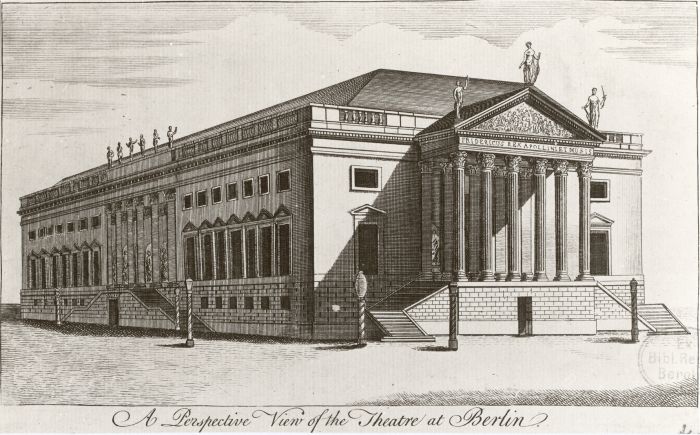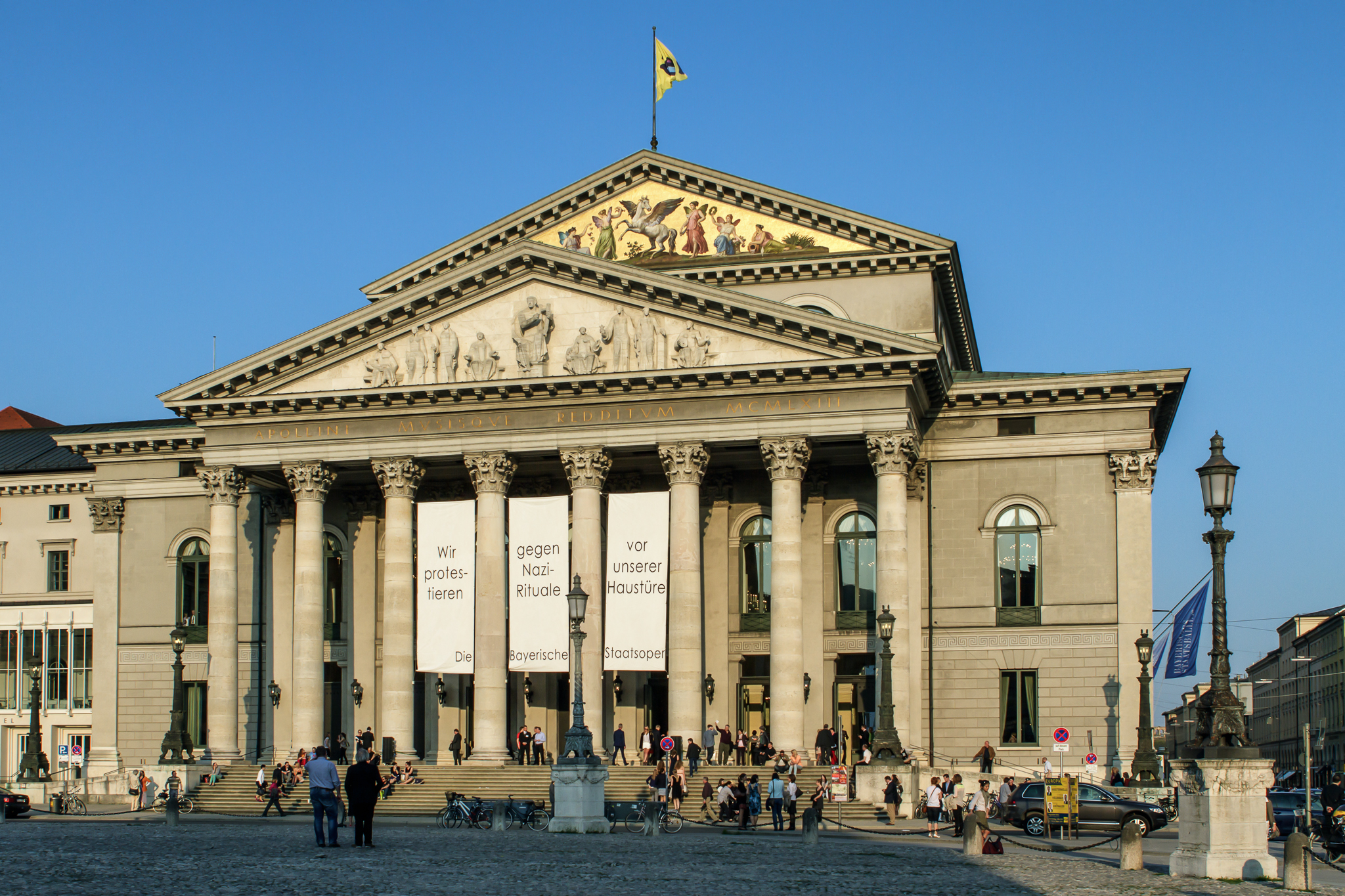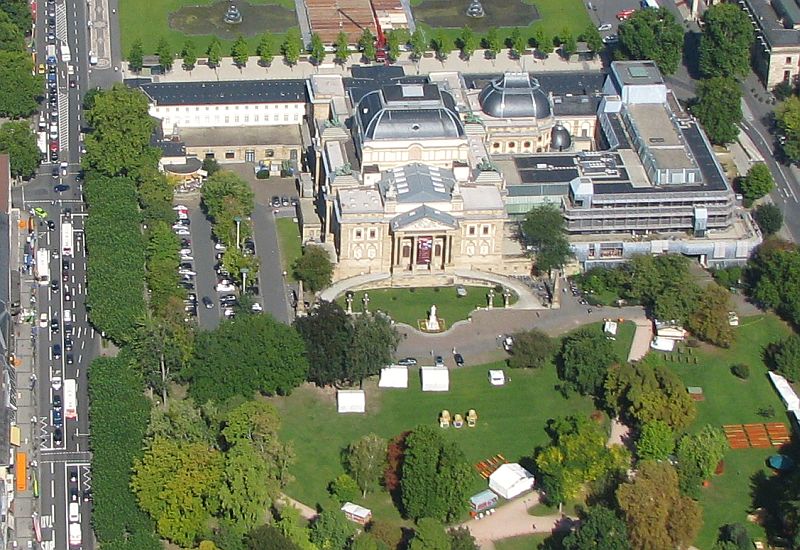|
Horst Günter
Horst Günter (23 May 1913 – 7 January 2013) was a German operatic baritone and voice teacher. Life Career as an opera singer Born in Leipzig, Günter joined the Leipziger Thomanerchor at the age of 9 and sang there as boy soprano."Förderer der Individualität – Der Sänger und Pädagoge Horst Günter" '''' (13 February 2004) His first singing teacher was the then Thomaskantor . He referred him to the music professor Fritz Polster in Leipzig. Günter received hi ... [...More Info...] [...Related Items...] OR: [Wikipedia] [Google] [Baidu] |
Baritone
A baritone is a type of classical male singing voice whose vocal range lies between the bass and the tenor voice-types. The term originates from the Greek (), meaning "heavy sounding". Composers typically write music for this voice in the range from the second F below middle C to the F above middle C (i.e. F2–F4) in choral music, and from the second A below middle C to the A above middle C (A2 to A4) in operatic music, but the range can extend at either end. Subtypes of baritone include the baryton-Martin baritone (light baritone), lyric baritone, ''Kavalierbariton'', Verdi baritone, dramatic baritone, ''baryton-noble'' baritone, and the bass-baritone. History The first use of the term "baritone" emerged as ''baritonans'', late in the 15th century, usually in French sacred polyphonic music. At this early stage it was frequently used as the lowest of the voices (including the bass), but in 17th-century Italy the term was all-encompassing and used to describe the averag ... [...More Info...] [...Related Items...] OR: [Wikipedia] [Google] [Baidu] |
Così Fan Tutte
(''All Women Do It, or The School for Lovers''), K. 588, is an opera buffa in two acts by Wolfgang Amadeus Mozart. It was first performed on 26 January 1790 at the Burgtheater in Vienna, Austria. The libretto was written by Lorenzo Da Ponte who also wrote ''Le nozze di Figaro'' and ''Don Giovanni''. Although it is commonly held that was written and composed at the suggestion of the Emperor Joseph II, recent research does not support this idea. There is evidence that Mozart's contemporary Antonio Salieri tried to set the libretto but left it unfinished. In 1994, John Rice uncovered two terzetti by Salieri in the Austrian National Library. The short title, ''Così fan tutte'', literally means "So do they all", using the feminine plural (''tutte'') to indicate women. It is usually translated into English as "Women are like that". The words are sung by the three men in act 2, scene 3, just before the finale; this melodic phrase is also quoted in the overture to the opera. Da P ... [...More Info...] [...Related Items...] OR: [Wikipedia] [Google] [Baidu] |
Oper Frankfurt
The Oper Frankfurt (Frankfurt Opera) is a German opera company based in Frankfurt. Opera in Frankfurt am Main has a long tradition, with many world premieres such as Franz Shrek's ''Der ferne Klang'' in 1912, '' Fennimore und Gerda'' by Frederick Delius in 1919, and Carl Orff's ''Carmina Burana'' in 1937. Frankfurt's international recognition began in the Gielen Era, 1977 to 1987, when Michael Gielen and stage directors such as Ruth Berghaus collaborated. A historic opera house from 1880 was destroyed in World War II, and reconstructed as a concert hall, the Alte Oper. The present opera house, built in 1963, is under one roof with the stage for drama. The opera orchestra is called Frankfurter Opern- und Museumsorchester. Today's venue for Baroque and contemporary opera is the Bockenheimer Depot, a former tram depot. Voted best 'Opera house of the year' by ''Opernwelt'' several times since 1996, including 2020, Oper Frankfurt is part of the Städtische Bühnen Frankfurt. H ... [...More Info...] [...Related Items...] OR: [Wikipedia] [Google] [Baidu] |
Komische Oper Berlin
The Komische Oper Berlin is a German opera company based in Berlin. The company produces opera, operetta and musicals. The opera house is located on Behrenstraße, just a few steps from Unter den Linden. Since 2004, the Komische Oper Berlin, along with the Berlin State Opera, the Deutsche Oper Berlin, the Berlin State Ballet, and the Bühnenservice Berlin (Stage and Costume Design), has been a member of the Berlin Opera Foundation. History of the building The theatre was built between 1891 and 1892 by architects Ferdinand Fellner and Hermann Helmer for a private society. It first opened on 24 September 1892 as ''"Theater Unter den Linden"'' with Adolf Ferron's operetta ''Daphne'' and Gaul and Haßreiter's ballet ''Die Welt in Bild und Tanz''. The theatre was primarily a vehicle for operetta, but was also used for various other events and balls. Around 800 people could be seated in the stalls, and the balconies and various en-suite dinner rooms housed about a further 1,70 ... [...More Info...] [...Related Items...] OR: [Wikipedia] [Google] [Baidu] |
Berlin State Opera
The (), also known as the Berlin State Opera (german: Staatsoper Berlin), is a listed building on Unter den Linden boulevard in the historic center of Berlin, Germany. The opera house was built by order of Prussian king Frederick the Great from 1741 to 1743 according to plans by Georg Wenzeslaus von Knobelsdorff in the Palladian style. Damaged during the Allied bombing in World War II, the former Royal Prussian Opera House was rebuilt from 1951 to 1955 as part of the Forum Fridericianum square. Nicknamed ''Lindenoper'' in Berlin, it is "the first theater anywhere to be, by itself, a prominent, freestanding monumental building in a city." History Names Originally called the ''Königliche Oper'' (Royal Opera) from 1743, it was renamed as the ''Preußische Staatsoper'' (Prussian State Opera) in 1919, then as the ''Deutsche Staatsoper '' in 1955. Until 1990, it housed the state opera of East Germany. Since 1990, it is officially called the ''Staatsoper Unter den Linden'' (State Ope ... [...More Info...] [...Related Items...] OR: [Wikipedia] [Google] [Baidu] |
Stuttgart State Opera
The Staatsoper Stuttgart (Stuttgart State Opera) is a German opera company based in Stuttgart, the capital of Baden-Württemberg, Germany. The Staatsorchester Stuttgart serves as its resident orchestra. History Performances of operas, ballet and plays in Stuttgart took place from the 17th century at the hall of . The probably first opera production was in 1660 the singspiel ''Der Raub der Proserpina'' by Hofkapellmeister Samuel Capricornus. Four years later, a permanent stage was established. In 1750, the building was remodeled as Stuttgart's opera house, named ''Königliches Hoftheater'' (Royal Court Theatre) in 1811. It burnt down in 1902, and opera was performed in a provisional ''Interimstheater''. Today's opera house was built from 1909 to 1912 by architect Max Littmann from Munich, with two halls, ''Großes Haus'' and ''Kleines Haus''. After the end of the monarchy in 1918, the theatres were named ''Württembergische Landestheater''. The ''Kleines Haus'', site of the wor ... [...More Info...] [...Related Items...] OR: [Wikipedia] [Google] [Baidu] |
Bayerische Staatsoper
The Bayerische Staatsoper is a German opera company based in Munich. Its main venue is the Nationaltheater München, and its orchestra the Bayerische Staatsorchester. History The parent ensemble of the company was founded in 1653, under Electress consort Princess Henriette Adelaide of Savoy, when Giovanni Battista Maccioni's ''L'arpa festante'' was performed in the court theatre. In 1753, the Residence Theatre (Cuvilliés Theatre) was opened as a major stage. While opera performances were also held in the Prinzregententheater (completed in 1901), the company's home base is the Nationaltheater München on Max-Joseph-Platz. In 1875, the Munich Opera Festival took place for the first time. Sir Peter Jonas became the general manager in 1993, the first British general manager of any major German-speaking opera house. In 2008, Nikolaus Bachler became Intendant (general manager) of the opera company, and Kirill Petrenko became Generalmusikdirektor (GMD) in 2013. In 2014, the B ... [...More Info...] [...Related Items...] OR: [Wikipedia] [Google] [Baidu] |
Nordwestdeutscher Rundfunk
Nordwestdeutscher Rundfunk (NWDR; ''Northwest German Broadcasting'') was the organization responsible for public broadcasting in the German Länder of Hamburg, Lower Saxony, Schleswig-Holstein and North Rhine-Westphalia from 22 September 1945 to 31 December 1955. Until 1954, it was also responsible for broadcasting in West Berlin. NWDR was a founder member of the consortium of public-law broadcasting institutions of the Federal Republic of Germany, the ARD. On 1 January 1956, NWDR was succeeded by Norddeutscher Rundfunk (NDR) and Westdeutscher Rundfunk (WDR). History Pre-war Broadcasting in what was to become NWDR's post-war transmission area was initiated in the early 1920s: * On 2 May 1924, Nordische Rundfunk AG (NORAG) began broadcasting from Hamburg; the company was renamed Norddeutsche Rundfunk GmbH in November 1932. * On 10 October 1924, Westdeutsche Funkstunde AG (WEFAG) began broadcasting from Münster; the company was renamed Westdeutsche Rundfunk AG (WERAG) in 1926 and ... [...More Info...] [...Related Items...] OR: [Wikipedia] [Google] [Baidu] |
Moses And Aron
''Moses und Aron'' (English: ''Moses and Aaron'') is a three-act opera by Arnold Schoenberg with the third act unfinished. The German libretto is by the composer after the Book of Exodus. Hungarian composer Zoltán Kocsis completed the last act with Schoenberg's heirs' permission in 2010, but ''Moses und Aron'' was almost always performed as Schoenberg left it in 1932, with only two of the planned three acts completed. Compositional history ''Moses und Aron'' has its roots in Schoenberg's earlier agitprop play, '' Der biblische Weg'' (''The Biblical Way'', 1926–27), a response in dramatic form to the growing anti-Jewish movements in the German-speaking world after 1848 and a deeply personal expression of his own "Jewish identity" crisis. The latter began with a face-to-face encounter with anti-Semitic agitation at Mattsee, near Salzburg, during the summer of 1921, when he was forced to leave the resort because he was a Jew, although he had converted to Protestantism in 1898. ... [...More Info...] [...Related Items...] OR: [Wikipedia] [Google] [Baidu] |
Hamburgische Staatsoper
The Hamburg State Opera (in German: Staatsoper Hamburg) is a German opera company based in Hamburg. Its theatre is near the square of Gänsemarkt. Since 2015, the current ''Intendant'' of the company is Georges Delnon, and the current ''Generalmusikdirektor'' of the company is Kent Nagano. History Opera in Hamburg dates to 2 January 1678 when the Oper am Gänsemarkt was inaugurated with a performance of a biblical Singspiel by Johann Theile. It was not a court theatre but the first public opera house in Germany established by the art-loving citizens of Hamburg, a prosperous member of the Hanseatic League. The Hamburg ''Bürgeroper'' resisted the dominance of the Italianate style and rapidly became the leading musical center of the German Baroque. In 1703, George Friedrich Handel was engaged as violinist and harpsichordist and performances of his operas were not long in appearing. In 1705, Hamburg gave the world première of his opera ''Nero''. In 1721, Georg Philipp Tele ... [...More Info...] [...Related Items...] OR: [Wikipedia] [Google] [Baidu] |
Hessisches Staatstheater Wiesbaden
The Hessisches Staatstheater Wiesbaden ('Hessian State Theatre Wiesbaden') is a German theatre located in Wiesbaden, in the German state Hesse. The company produces operas, plays, ballets, musicals and concerts on four stages. Known also as the Staatstheater Wiesbaden or ''Theater Wiesbaden'', its orchestra is the Hessisches Staatsorchester. The building was inaugurated in 1894. The theatre is the host for the annual festival Internationale Maifestspiele Wiesbaden, established in 1896 after the Bayreuth Festival. History The building of the theatre was initiated and substantially supported by the German emperor William II who regularly visited the spa in Wiesbaden. A team of architects from Vienna, Ferdinand Fellner and Hermann Helmer, won the competition. They constructed the building from 1892 to 1894 in Baroque Revival style, following models in Prague and Zurich. The inauguration was on 16 October 1894 in the presence of the emperor. The Foyer was built in 1902 by archi ... [...More Info...] [...Related Items...] OR: [Wikipedia] [Google] [Baidu] |
Tannhäuser (opera)
''Tannhäuser'' (; full title , "Tannhäuser and the Minnesängers' Contest at Wartburg") is an 1845 opera in three acts, with music and text by Richard Wagner ( WWV 70 in the catalogue of the composer's works). It is based on two German legends: Tannhäuser, the mythologized medieval German Minnesänger and poet, and the tale of the Wartburg Song Contest. The story centres on the struggle between sacred and profane love, as well as redemption through love, a theme running through most of Wagner's work. The opera remains a staple of major opera house repertoire in the 21st century. Composition history Sources The libretto of ''Tannhäuser'' combines mythological elements characteristic of German ''Romantische Oper'' (Romantic opera) and the medieval setting typical of many French Grand Operas. Wagner brings these two together by constructing a plot involving the 14th-century Minnesingers and the myth of Venus and her subterranean realm of Venusberg. Both the historical and the ... [...More Info...] [...Related Items...] OR: [Wikipedia] [Google] [Baidu] |









